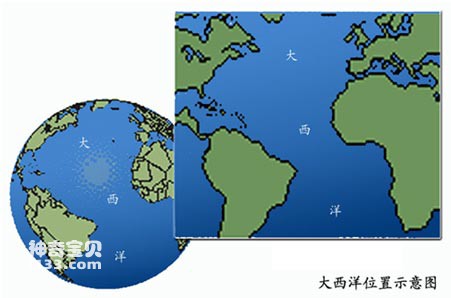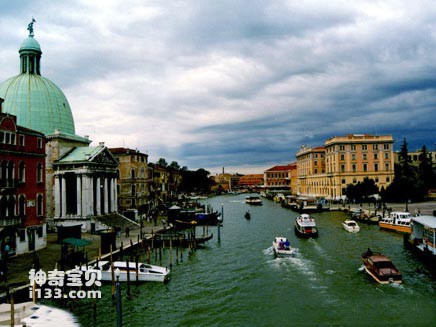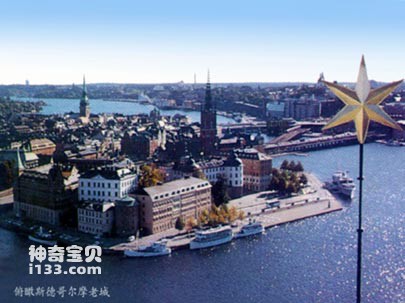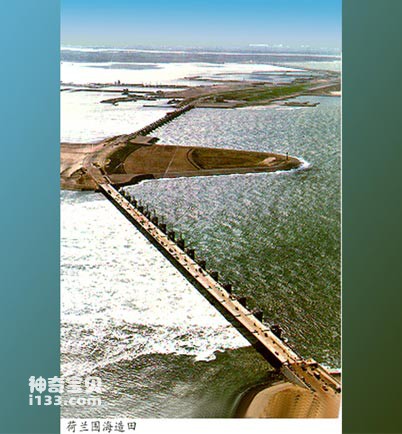The Atlantic Ocean is between Europe, Africa, America and Antarctica. It is the second largest ocean in the world and the youngest ocean, only 100 million years ago. The Atlantic Ocean has an area of 93.363 million square kilometers, an average depth of 3627 meters, and a maximum depth of 9219 meters. It accounts for approximately 25.4% of the total ocean area and is half the area of the Pacific Ocean. However, it is desperately expanding, splitting the two sides of the coast. Maybe in the distant future, it will catch up with the latter and its width will catch up with or exceed the Pacific Ocean.

Map of the location of the Atlantic Ocean
The Atlantic Ocean is located west of Gibraltar and was originally called the "Western Ocean". Its English word (Atlantic) is based on the name of Atlas, the strongman in ancient Greek mythology. In the Greek epic "The Odyssey", there is a powerful god named Atlas. He knows the depth of any ocean in the world and separates heaven from earth with pillars of stone. He lives in the Atlas Ocean. In 1650, the Dutch geographer Bonnard Varenne officially used the name "Atlas Ocean". The Chinese translation of "Atlantic" was translated by European missionaries during the Ming Dynasty and has been used to this day.

Stockholm old town

Stockholm, a multi-island city on the east coast of the Atlantic Ocean
The Atlantic shipping industry is extremely developed. The west leads directly to the Pacific Ocean through the Central American Panama Canal; it can also go around Cape Horn, the southern tip of South America, and pass through the Drake Strait or the Strait of Magellan to reach the Pacific Ocean. In the east, it enters the Mediterranean through the Strait of Gibraltar, passes through the Suez Canal, passes through the Red Sea, and takes a shortcut to the Indian Ocean; it can also bypass the Cape of Good Hope at the southern tip of Africa and enter the Indian Ocean. The connection between the Atlantic Ocean and the Arctic Ocean is more convenient than other oceans, with multiple waterways connecting them. The Atlantic Ocean has many international routes connecting coastal countries in Europe, America, and Africa, and its cargo volume ranks first among all oceans. The North Atlantic is especially busier. The Strait of Dover and the English Channel, which connect the Atlantic Ocean and the North Sea, are the busiest places for maritime traffic in the world. There are many ports along the Atlantic coast, including Boston, New York, Baltimore, New Orleans, Havana, Amsterdam, Copenhagen, Venice, etc.

Temple of Serapis, Naples, Italy
Temperatures in the northern Atlantic are higher than in the south. There is also a big difference in temperature between the east and west sides. Between 30 degrees north and south latitude, the east is about 5℃ cooler than the west. Between 30 degrees and 60 degrees north latitude, the temperature in the east is about 10℃ higher than the west, making the climate in Western Europe warm all year round. Like spring. For example, Paris in France is located similar to Harbin in Northeast my country, but the winter temperature in Paris is similar to Shanghai and Nanjing in China. In the South Atlantic, south of 30 degrees south latitude, the difference between the east and west sides is not obvious.

Magnificent Dutch engineering of Cape Foucault waterway
In the North Atlantic, there is also a clockwise circulation, consisting of the North Equatorial Current, the Gulf Stream, the North Atlantic Warm Current and the Canary Cold Current. Among them, the Gulf Stream is the largest warm current in the world. Its flow is equivalent to 120 times the total flow of rivers in the world. Like a huge heating pipe, it supplies a huge amount of heat, making the climate in northwest Europe as warm as spring. The circulation in the South Atlantic is counterclockwise and consists of the South Equatorial Current, the Brazilian Warm Current, the westerly drift and the Benguela Current. Atlantic tides are mostly semidiurnal. On the open ocean, the tidal range is not obvious; on the coast or in narrow bays, the tidal range is large. The tidal range in Bristol Bay on the south coast of the United Kingdom is as high as 11 meters, and the tidal range in the Bay of Fundy in North America is as high as 21 meters. The tidal surge at the mouth of the Amazon River in South America is even more spectacular than the spring tide of the Qiantang River in my country.

Amsterdam, The Netherlands
The Atlantic Ocean contains huge resources. Its fishery resources are extremely rich, and several of the world's richest fishing grounds are in the Atlantic Ocean. The vast continental shelf near the Atlantic Ocean also contains rich mineral resources.
animal tags:
We created this article in conjunction with AI technology, then made sure it was fact-checked and edited by a Animals Top editor.